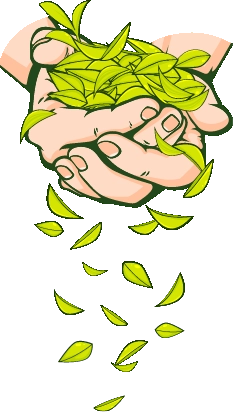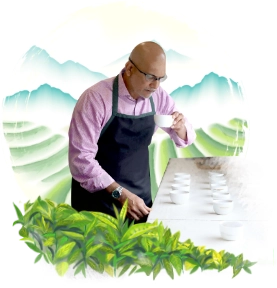Iced Tea – As American as Apple Pie…or Iced Tea!
The Chinese made tea an enigma. The Japanese made tea an art. The English made tea an etiquette…and the Americans poured (ice) cold water on all this – and invented a refreshing, sweet, chilled beverage that they drink by gallons!
As peak summer sets and we head into June – the National Iced Tea Month, we thought it was the perfect time to pay our homage to this uniquely American beverage that changed the concept of tea forever. Join us as we recount the early beginnings and key events that has made Iced Tea so hot today!
[image]
Americans drink a mind-boggling 3.8 billion gallons of Iced Tea every year. Four out of five Americans have it daily. Almost 85-90% of all tea consumed in the USA is in the form of Iced Tea. It is one of the hottest beverage category today, with all major brands rushing in to fulfil an almost insatiable demand.
How is it that Iced Tea has become such a rage in a country that on looked down upon drinking tea as ‘unpatriotic’ and threw 342 chests of tea in the Boston Harbour?
Early Origins – Ice Entrepreneurs and Tea Punch
The Boston Tea Party in 1773 was a revolt against the Tea Act. Till then, tea was consumed in the USA as a hot beverage, just as it was in rest of England. After the Boston Tea Party, teas was used to create highly boozy punches at the bars and pubs in the USA. Early cookbooks evidence the recipe for cold green tea punches made with green tea, sugar, cream and lots of ice and lots of liquor…more akin to the Long Island Tea cocktail of today!
Regent’s Punch was a particularly popular tea punch in the beginning of the nineteenth century, named after King George IV, who was also known as Prince Regent before his accession to the throne. But it was from the second half of the nineteenth century, when the Ice Entrepreneurs had successfully managed to make, store and transport ice on a commercial scale that the non-alcoholic Iced Tea we are familiar with today started showing up prominently.
Check out our recipe for Regent’s Punch in our Top Iced Tea Recipes later in this blog.
From Tea Punches to Iced Teas
With ice now being easily available and also more affordable, iced teas without alcohol were becoming increasingly popular. It became simpler to make iced teas at home. As more household experimented at homes, alcohol started to be replaced by sugar and lemon.
Recipes on how to make iced teas started to find their way into cookbooks. The first ever recipe for non-sweet iced teas is found in The Buckeye Cookbook by Estelle Woods Wilcox in 1876, followed the first recipe for sweet iced tea in Housekeeping In Old Virginia by Marion Cabell Tyree in 1879. All iced tea recipes around this time called for tea to be brewed hot, then rested till room temperature after which, ice, sugar and lemon were to be added.
Richard Blechynden and the World’s Fair in St. Louis
By the turn of the century, green tea started getting replaced by the black tea for brewing iced tea, which still largely remained a home-made drink. It was yet to become a national passion and a national drink. And it was one particular event that in 1904 that was to change the fortune to iced teas in the USA forever.
At the World’s Fair in St. Louis on a hot summer afternoon in 1904, Richard Blechynden, the India Tea Commissioner and Director for the East India Pavilion, found that visitors were not drinking the hot tea his was offering from his stall. Of course, it was due to the intense heat, and the parched customers were yearning for something cold and refreshing. Desperate and determined that visitors try his tea, he filled large bottles with brewed tea, and put them upside down. The teas were then made to flow through iced lead pipes. Some say, he added large blocks of ice into the hot, brewed tea! The resulting tea turned out to be an instant hit with visitors, and soon, every visitor at the fair wanted to try this new, iced tea concoction. By the time the fair ended, it is estimated to have some 20 million visitors, a majority of whom had carried the taste and memory of this wonderful brew home, and were sure to demand more and more of it.
Blechynden knew he had a winner on his hands. After the fair, Blechynden took his entire brewing equipment, including the iced lead pipes, to Bloomingdale Brothers Departmental Store, giving all customers iced teas for free in hot summer.
And American summers, since then, have become synonymous with iced teas!
Even though Richard Blechynden did not invent the iced tea, he had an interesting and important role to play in its popularisation and commercialisation!
Prohibition and the Long Island Iced Tea
The American Prohibition from 1920-1933 meant that the alcoholic tea punches could no longer be served at pubs and bars. Other forms of liquor and alcohol like wines, whiskies and beers were also strictly prohibited. Iced teas soon started becoming increasingly available all over the country. But Americans were still finding out ways to beat the prohibition – and that is what leads us to another interesting story…
At Kingsport, Tennessee, there was a man called Old Man Bishop, from the Long Island community. During one of his experiments to develop a new cocktail, Bishop allegedly combined tequila, vodka, gin, rum, whiskey, and maple syrup. He called it – Old Man Bishop. The cocktail looked notoriously similar to a very popular beverage that was consumed all across America, in a tall and heavy-bottomed glass, with lots of ice, golden to dark brown in colour…but without any alcohol! Old Man Bishop looked like Iced Tea…but was way punchier and boozier!
And then, in the 1960s, when the hippie revolution was at its peak, a revised version of the drink appeared in Betty Crocker’s New Picture Cook Book in 1961 where it was named – Long Island Iced Tea!
While the story of Long Island Iced Tea is intriguing, here are some all-time top favourite Iced Tea recipes for June!
From Regent’s Punch to Arnold Palmer to John Daly – Top Iced Tea Recipes
Regent’s Punch
One of the oldest tea punches with a generous dose alcohol (definitely punchy), Regent’s Punch, favoured by King George IV, uses green tea and arrack with a tangy mix of juices of citrus fruits like lemon, orange, and even pineapple – to which is added sugar, champagne, brandy and rum. So potent used to be the original Regent Punch that an early drinker described it as inducing “mad, delirious dizziness”.
At the last count, there were over a billion variations of the Regent’s Punch, each claiming to be the original!
Arnold Palmer Drink
After spending a long day designing a golf course in the late 1960s, Arnold Palmer was ordering his lunch. He asked the waitress to make him a drink with three parts of home-made, unsweetened iced tea and one part lemonade. A woman seated nearby overheard what Arnold had ordered. She called over the waitress, and said, “I will also have that Arnold Palmer drink, please’. And the Arnold Palmer Drink – iced tea with lemonade was born.
It is essentially a home-made, cold-brewed, unsweetened iced tea (3 parts) mixed with lemonade (1 part)
Arnold Palmer Half and Half
Another popular variation of the Arnold Palmer Drink is the Half and Half – half cold-brewed, unsweetened iced tea with half home-made lemonade.
John Daly
An alcoholic version of Arnold Palmer, this simple and refreshing drink consisting of unsweetened, cold-brewed iced tea (2 parts) mixed with lemonade (2 parts) and vodka (1.5 parts) is named after another great American golfer – John Daly.
Iced Tea Today
Today, iced tea has become one of the hottest beverage categories in the world. From ready-to-drink bottles to instant premixes to specially curated blends of loose-tea, herbs and spices, the range is ever-growing. There is an iced tea for every taste and preference. For making natural and authentic iced teas, we suggest loose-leaf teas which are ideal for both hot and cold brew.
As you get ready to welcome June – the National Iced Tea Month here in the USA – and make hay while the sun shines, here are some of the best loose-leaf teas to choose from : Mint to Mango and Tamarind to Turmeric. We especially recommend 100% Turmeric Iced Teas Immunity Kit with Ginger, Tulsi, Moringa, Ashwagandha and Spiced variants.

Tea is a religion in the art of life.

